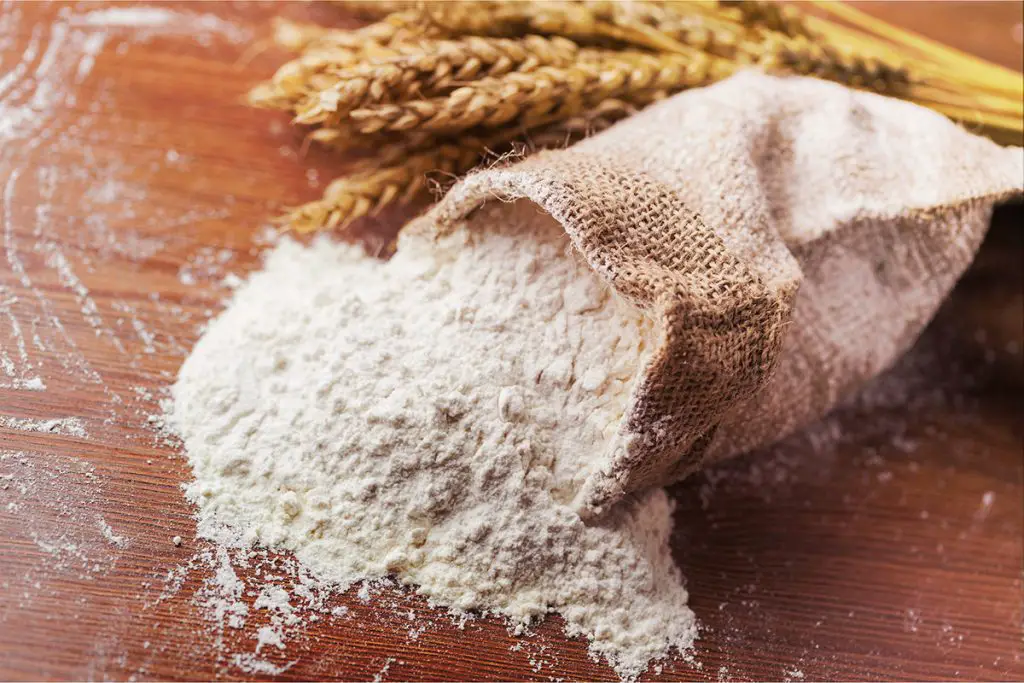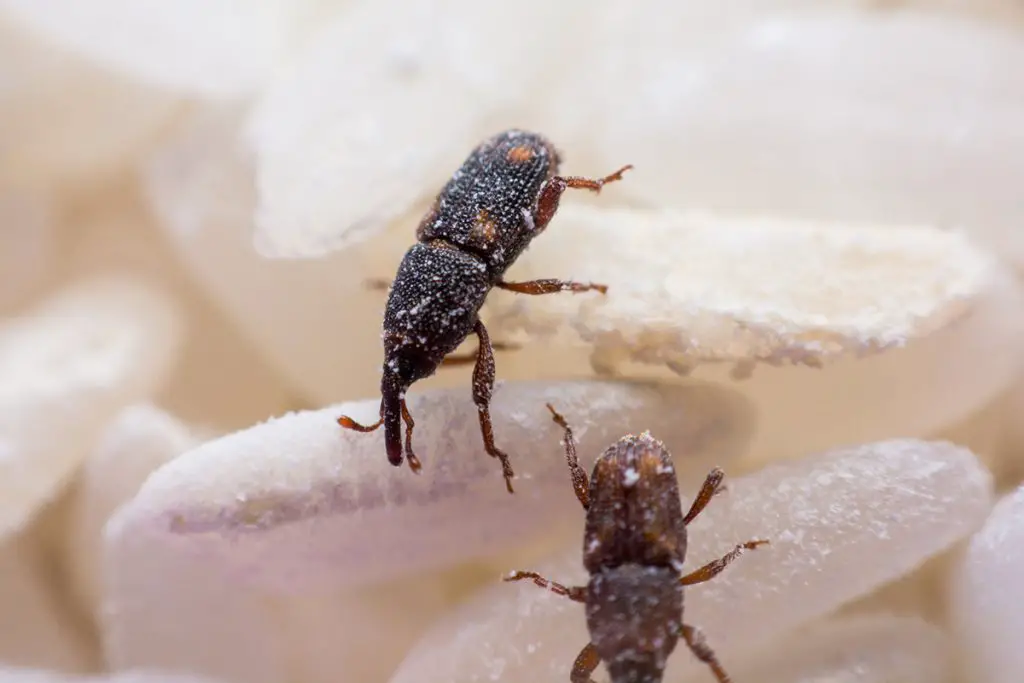Can You Freeze Flour? (A Guide to Long Term Storage)
Suppose you’re craving pancakes—so you bought a packet of flour to make them. Since you don’t eat pancakes often, you wonder when you’ll use the flour again. You thought of freezing the flour to make it last longer, but can you?
You can freeze flour, as long as it’s stored in an airtight container. Flour can be safely stored in the freezer for as long as two years. In addition, keeping flour in the freezer will protect it from pests such as mites and weevils.
In this article, I’ll discuss various topics related to this question, including the benefits of freezing flour, storing flour correctly, knowing when the flour has spoiled, and preventing grain mites and other pests from occurring. Keep reading.
Benefits of Freezing Flour
Many people aren’t aware of the various benefits of freezing flour. Besides the extended shelf life, storing flour in the freezer can effectively keep grain mites away, such as weevils and weevil eggs.

Freezing Flour Will Kill Weevils and Their Eggs
Weevils are tiny beetles known as insect pests because they damage crops and flour.
Not only does freezing your flour keep weevils away, but it also kills eggs that might have already been in the flour before you brought it home.
Since flour has little to no moisture (14% or less), neither will it harden when stored in the freezer nor affect the texture and taste of the flour.
A Freezer Can Extend Your Flour’s Shelf-Life
Freezing flour can extend its shelf-life by an extra year, all while keeping grain mites away. If you don’t use flour often, storing it in the freezer will benefit you tremendously as it’ll keep the flour from spoiling while not being put to use.
However, ensure you allow the flour to come to room temperature and stir it well before using. Note: If you use cold flour to bake, your baked goods won’t rise and may turn out rubbery.
Since flour that has been stored in the freezer has a longer shelf-life than fresh flour, you can save money by keeping your flour in the fridge/freezer. More importantly, however, by freezing flour you’ll always have some on hand, ready to use.
This is especially good for those who infrequently make use of flour!
How To Store Flour Correctly
Flour can last a long time if you store it correctly. However, leaving your bag of flour open in the pantry exposes it to a grain mite infestation and increases the rate at which it turns rancid, ultimately giving you no choice but to throw it away.

Store the Flour in an Airtight Container
When you bring the flour home from the store, it’s a good idea to put it in the freezer for two days to kill any grain mites or insect eggs that may be lurking in the bag.
You’ll also want to ensure that your flour stays fresh and free of pests by transferring it from the bag it came in into an airtight Tupperware/container. You could also use a resealable bag. But bear in mind that grain weevils can chew through paper and plastic packaging.
Keep the Flour Away From Sunlight
Store refined and all-purpose flour in a cool, dry spot away from sunlight. For extended shelf-life, keep your flour in either your refrigerator or freezer.
Whole-grain flour is high in fiber and oils, making it prone to spoiling faster. The higher level of oils in whole-grain flour can cause it to rapidly go rancid and tarnish the flavor when oxidized and exposed to sunlight.
That said, it’s best to store whole-grain flour in an airtight container in the fridge/freezer.
How To Know if Your Flour Has Spoiled
Since the shelf-life of different kinds of flour varies, it may be difficult to tell when the flour has gone bad. Even if the flour has passed its best-by date, it sometimes still looks and smells fine and is safe to use.
Here are some signs that your flour is no longer safe to use:
- It smells bad. If your flour smells musty or sour, it’s expired and no longer safe to use. The best way to tell if you can still use your flour is by smelling it since flour generally doesn’t have a scent. Some describe the smell as similar to play-dough.
- There’s visible mold. According to Cooking Chew, you shouldn’t use flour if there’s mold present as the mold can produce harmful chemicals known as mycotoxins. These toxic compounds are detrimental to your health and can cause diarrhea and vomiting if consumed. If you see any mold, throw the flour away. Keep the flour away from moisture to prevent fungus from growing.
- It looks discolored. If your flour has a yellow tinge to it, throw it out. A bluish tinge indicates that it has started to grow mold and is time to throw it away.
Although you could use flour that has passed its best-by date without any consequences, the characteristics mentioned above are signs that you shouldn’t use it. Using expired flour could potentially make you sick, cause your baked goods not to rise, or make your foods containing the expired flour not taste so great.
Rather be safe than sorry and throw out old and spoiled flour.
Keep Weevils Away From Flour With Clean Containers & Bay Leaves
Grain mites are pests that can ruin all the contents of your pantry. They cause wastage and, unfortunately, don’t only occur in flour. They can be found in rice, pasta, and even cereal. That said, there are a few simple yet effective ways to keep grain mites from invading your pantry.

Here are some tips for preventing grain mites from occurring:
- Keep your grains in airtight containers. Grain mites will not be able to chew through a container, so your best bet to prevent weevils is to store your grains in containers such as Tupperware, mason jars, glass containers, etc.
- Wash your containers between uses. Cleaning your containers with hot, soapy water will do the trick. Suppose you want to go the extra mile. Then clean the containers with a solution of 1 cup of hot water with ½ cup of bleach or 1 cup of hot water with 1 cup of white vinegar. Ensure your containers are completely dry before refilling them.
- Place a bay leaf in your canisters. Bay leaves are an effective grain mite repellant, so placing bay leaves in your flour container will do a great job at keeping weevils away. The bay leaves won’t affect the taste of your flour or grains.
A sign that weevils have infested your flour will be evident through brown, dust-like remnants on the surface of your flour or tiny brown spots throughout the container.
Note that grain mites do not indicate how clean your kitchen is. Weevils can appear regardless of the cleanliness of your kitchen.
Conclusion
Whether you have cornflour, whole-grain flour, or all-purpose flour, rest assured that the freezer is the best place to store it. Freezing flour is the best way to store it and is a surefire way to keep your flour fresh and free of pests!






